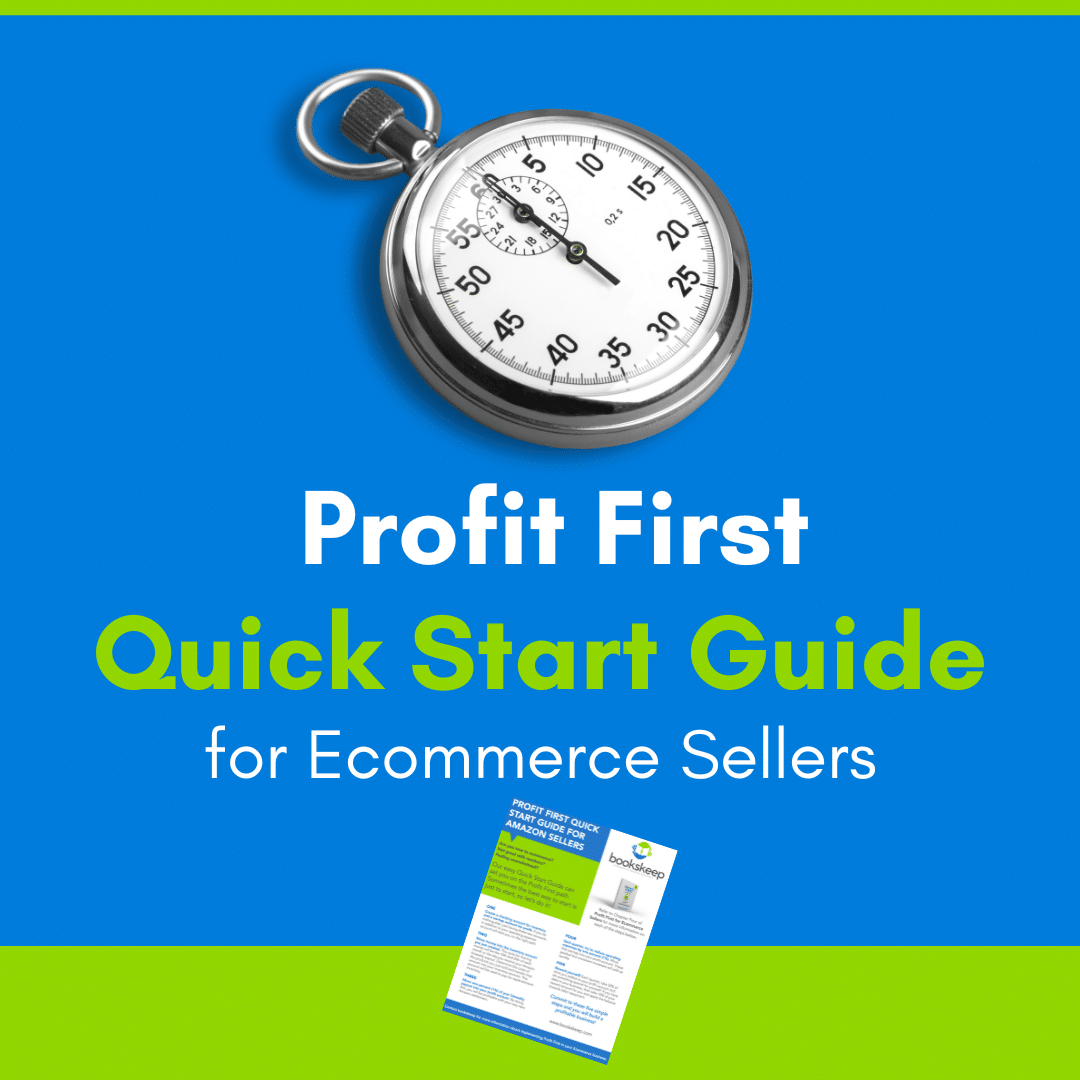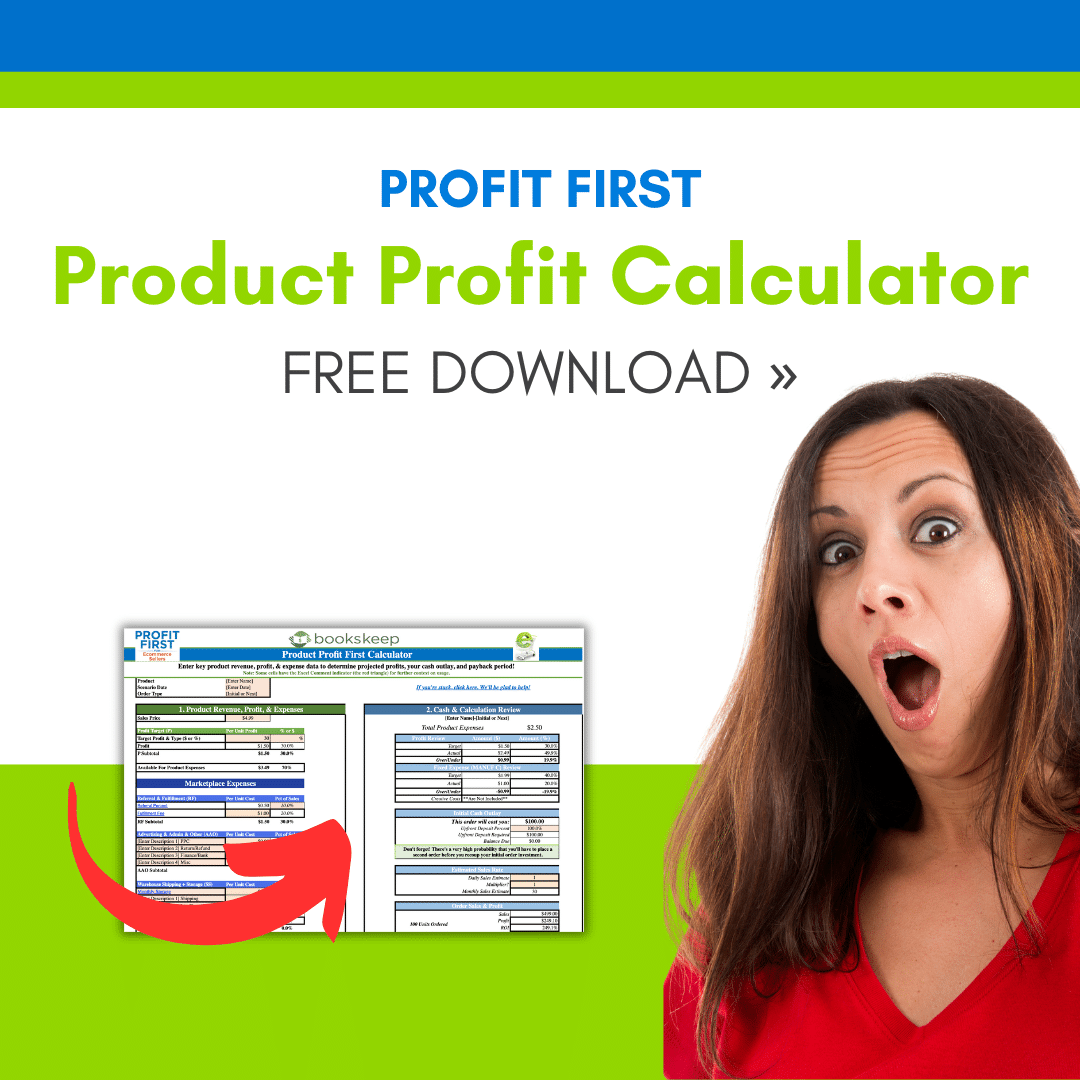By now, if you’ve read anything I’ve written, you know that I am passionate about Profit First. I use it in my business and I even wrote my own book about it, Profit First for Ecommerce Sellers. However, as an Amazon Accountant there are times when Profit First is not the answer. If you are not making money at the gross profit level, then no theory about Parkinson’s Law or Primacy Effect or multiple bank accounts will solve the problem. Here’s what you should do instead.
First, make sure that your Amazon bookkeeping software gives you an accurate gross profit number; otherwise you’re flying blind. You need a profit and loss report structured with your income, less cost of goods and Amazon fees. The difference is your gross profit. Gross Profit Margin is the gross profit divided by the total income x 100. This percentage should be in the 30% range.
Example
Sales $100,000
COGS $ 35,000
Amazon Fees $ 30,000
Gross Profit $ 35,000
Gross Profit $35,000 divided by Sales $100,000 x 100 = Gross Margin 35%
If your margin is below 30%, it is unlikely that you will have enough money to run your business operations. Clients will sometimes push back that an ecommerce business does not need a high margin because operating costs are lower. I have worked with many ecommerce businesses and the data always indicates a need for a gross margin around the 30% level to sustain the owner’s payroll and taxes, and even higher if you are wanting to set aside money to scale up your business.
If you’re not hitting that 30% level, then it’s time to do some analysis. The first analysis should be based on sales income on the top 20% of products that you’ve sold in the last 60-90 days. Are you making money on these products, after subtracting your product costs including prep center costs and Amazon fees? If not, you have two choices: raise your price or reduce your costs in the future. The bulk of your sales is not generating enough money to cover your costs and to contribute to your operating costs of the business. If you get a good result here, then repeat this analysis and look at the next 20%. You want to determine at what point your sales are not generating an adequate profit and make adjustments.
Another similar analysis is to look at the top 20% of products sold by quantity. Again, determine if you’re making money on these products after you subtract your costs and fees. Selling a lot of an item that does not generate enough profit ties up your cash. Most ecommerce businesses do not operate with so much extra cash that they can afford to tie up large amounts on items that do not bring a return.
Based on these analyses, you can develop a strategy to increase pricing, reduce costs, change your product mix or adjust all these levers. I see clients spending time and money to increase sales on unprofitable products. This is a double whammy. If you’re losing money on a product, do you really want to pay high advertising costs, too? Focus your effort and your money on the money-making products and your profits will grow. Once you have profits, you’re ready to get started with Profit First, setting aside the funds for Profit, Owners Pay and Taxes, and keeping those Operating Expenses to a minimum. For more information about these analyses and Profit First, check out Profit First for Ecommerce Sellers where I share much more detail about “Inventory Insanity.”




Leave a Comment